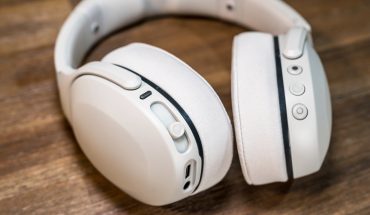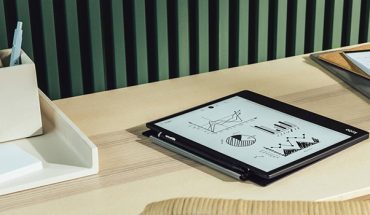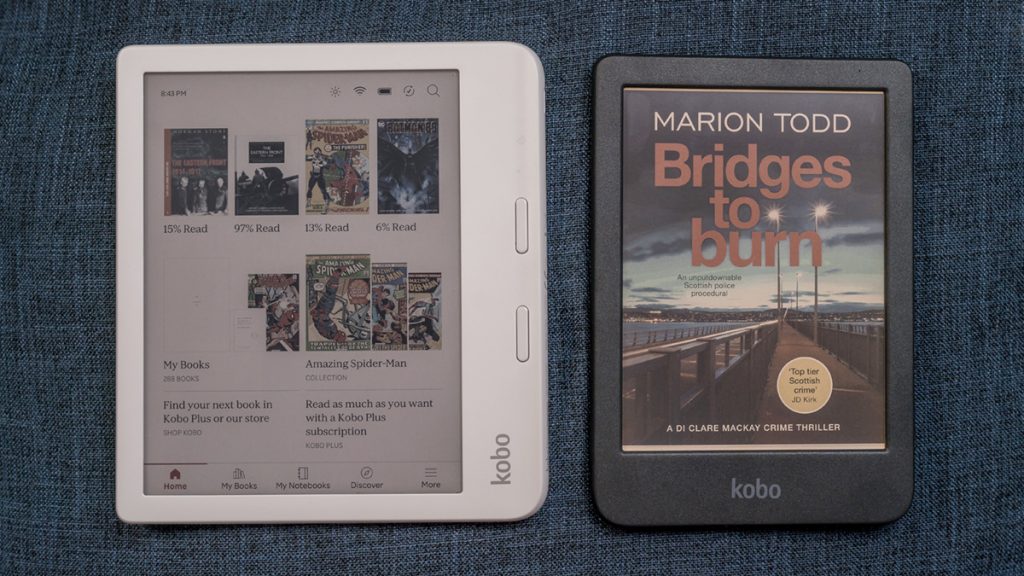
What is a Kobo eReader like when the screen finally brings some colour into the mix? The Libra and Clara Colour are the first to show it to you.
It’s been a long time coming given eReaders have long stuck to monochrome screens. While text doesn’t need to be in colour, there’s something different about seeing covers, photos, illustrations, maps and other visual content in a book in colour. What Kobo did here is take an incremental approach, meaning neither the Libra nor Clara Colour introduce other new features not seen in other Kobo devices.
They also differ from each other in some key ways, which is why the Libra Colour ($250) is more of a premium device compared to the Clara Colour ($180).
Familiarity, just with colour
The Libra Colour follows the same form factor of the Libra 2, where Kobo uses recycled materials to craft the device’s shell. You get the same dimensions, weight, page-turn buttons, and the lip on the side for easier one-handed reading. It has a textured back for handling (with a power button), along with a USB-C port for charging or to connect to computers. It retains the same IPX8 water resistance rating of the Libra 2, so you are good to read with it in a pool or tub. Just keep it away from saltwater.
The 7-inch E Ink Kaleido 3 display brings a very modest 4,096 colours to the Libra Colour. It won’t match the millions of available colours that make tablets look rich and saturated, so what you get is more muted by comparison.
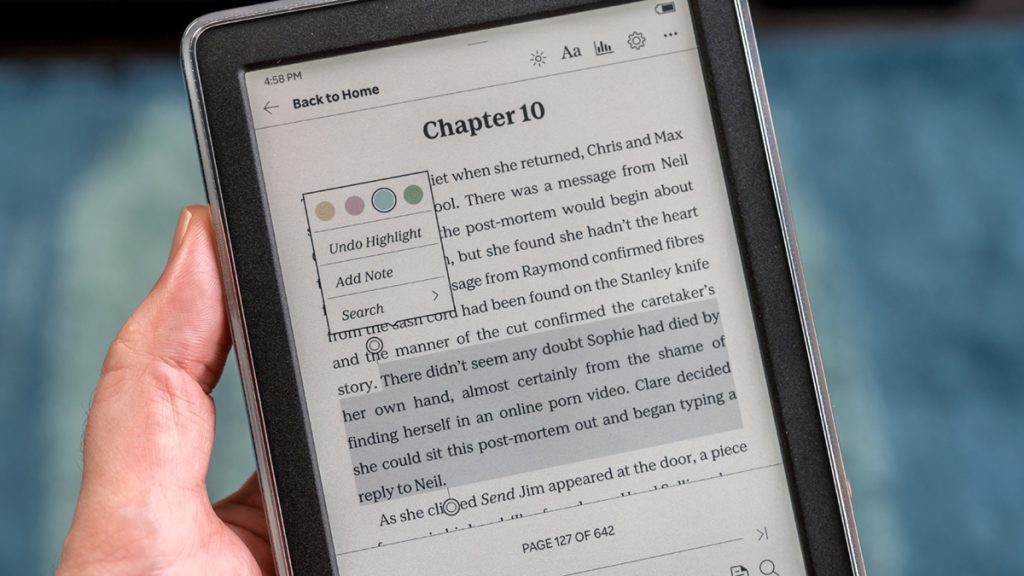
The same is true of the Clara Colour, whose 6-inck E Ink Kaleido 3 display is the same size as the previous Clara 2E. Its body is essentially the same as well, including the IPX8 water resistance, ensuring both of these new eReaders can work just fine if you submerge them down to two metres of clear water for up to 60 minutes.
Nothing much changes on the software side with both, though you now can highlight words or passages in any of four different colours. Kobo’s ComfortLight Pro is back to adjust the screen’s colour temperature for a warmer tone in darker surroundings, which can also kick in at a predetermined time of your choice. Dark Mode is also an option in the settings to invert the black and white portions of the screen if that’s easier on the eyes in a dark room. E Ink displays have always been better at withstanding glare from bright sunlight and that carries on with the colour display for both these units.
The Libra Colour and the Kobo Stylus
The Libra Colour doesn’t come bundled with it but it’s the first Kobo eReader outside the Sage and Elipsa series to support the Kobo Stylus 2. You don’t get a ton of space to write in the margins for an ebook, so the bigger value proposition is in the simplicity of underlining or highlighting text within one. In addition, you can also write in notebooks — choosing up to 10 different colours for the pen input — to jot down notes, doodle or convert your writings to text.
When it comes to ebooks, however, you can’t just write on all of them because it depends on the file format. EPUB, PDF and TXT documents are fine, whereas CBZ and CLZ aren’t. This is convenient if you have a PDF related to work or a project and want to jot down notes. It’s just a little harder to share those documents, though the Libra Colour offers both Google Drive and Dropbox as cloud options where you can download or upload files. The Clara Colour doesn’t have pen support nor access to those two cloud services.
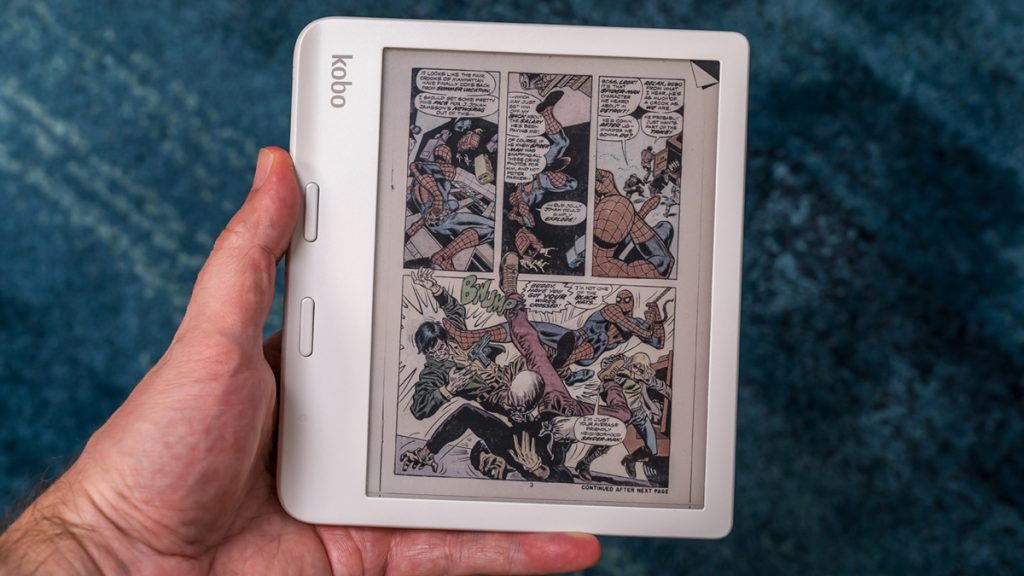
Reading and content
You get sharper pixel density at 300dpi in monochrome with colour dropping to 150dpi. You won’t notice the difference unless you zoom in closer, and on small screens like this, those differences won’t be as obvious. Reading on either device isn’t all that different from before, save for the way colour changes how it looks. It’s one thing to see covers in colour, but when there are maps or photos in colour, it really does feel different that way.
Kobo has always been pretty generous in what you can store on its devices, and that continues here. Whether you connect it to a computer or download files from the cloud, Kobo supports EPUB, EPUB3, PDF, MOBI, TXT, HTML, CBZ, CBR and RTF files, along with JPEG, TIFF, GIF, PNG and BMP images. Comics have never looked more alive on a Kobo device before, with CBZ or CBR files ready to show in colour with either the Libra or Clara Colour.
You can still access your public library’s digital ebooks via OverDrive. All you need is a library card and you can borrow books whenever they’re available. Pocket is back to help you read articles or text content you save from the web.
That’s all on top of Kobo’s own store for ebooks. If you don’t want to go a la carte, you can try Kobo Plus as an all-you-can-read buffet, though you only get a fraction of Kobo’s full catalog of ebooks.
I should also mention you can listen to audiobooks with either device as well. You’ll need Bluetooth headphones/earbuds or a speaker to do it since there’s no headphone jack, though.
As for storage, the Libra Colour has 32GB and the Clara Colour 16GB. That’s good enough for thousands of ebooks and plenty of audiobooks. You just may need to be more mindful of how you’re utilizing it if you end up loading up either device with a lot of content.
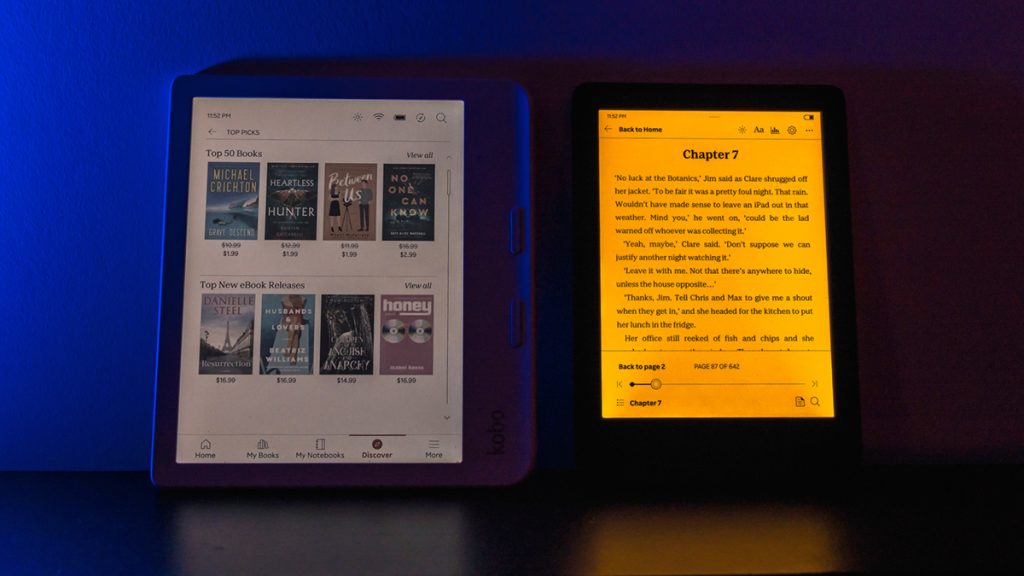
Battery life
It’s hard to quantify exactly how much battery life you’ll get with either eReader because of the variables involved. Kobo rates the Libra Colour at 40 days based on 30 minutes of daily reading at 30% brightness with Wi-Fi and Bluetooth turned off. For the Clara Colour, Kobo says 42 days under the same conditions. Even if you read a lot every day, you should expect battery life to last for weeks rather than days. Audiobooks naturally drain it faster.
A splash of colour
As I pointed out earlier, reading on either of these devices doesn’t feel very different as far as their design goes. Colour displays certainly make a difference because the content looks unlike any other Kobo eReader. The Libra Colour takes it further with stylus support to make it something of a productivity tool as well.
The only thing is you pay a bit of a premium to get them. At $250, the Libra Colour is more expensive than any Libra model that came before it. Even the Clara Colour is pricier at $180. The good news is they’re pretty durable and should last for years, in part because Kobo is good about supporting its products with updates after they’ve stopped making them.
Amazon has yet to make a Kindle with a colour display. Whether or not that’s coming soon is unknown, leaving Kobo as the best option when you no longer want to stay monochrome.

